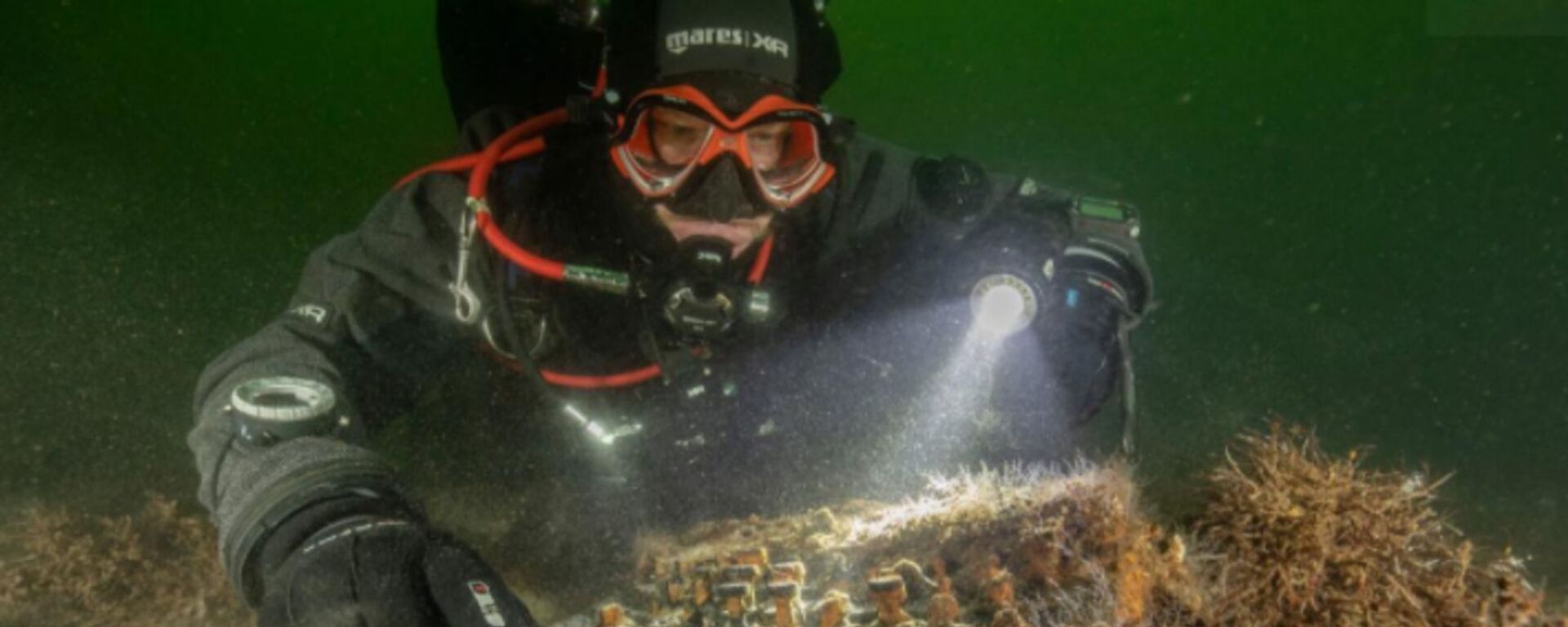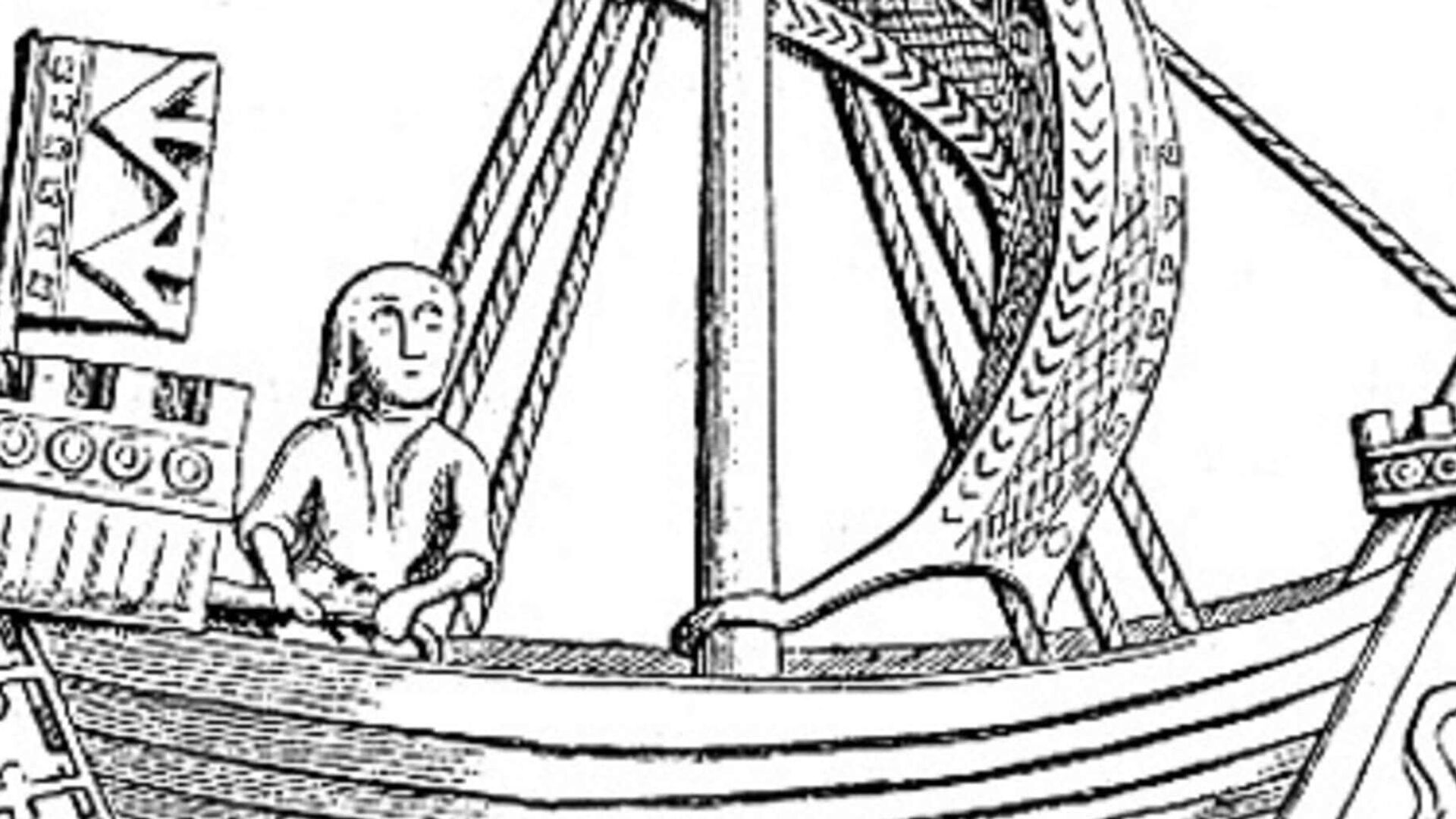https://sputnikglobe.com/20220429/unique-medieval-transport-vessels-unearthed-in-sweden-1095139340.html
Unique Medieval Transport Vessels Unearthed in Sweden
Unique Medieval Transport Vessels Unearthed in Sweden
Sputnik International
Medieval transport ships known as cogs were associated with the Hanseatic league and used broadly across northern Europe. Still, they are rare finds today and... 29.04.2022, Sputnik International
2022-04-29T07:15+0000
2022-04-29T07:15+0000
2022-10-19T20:16+0000
scandinavia
sweden
newsfeed
middle ages
archaeology
https://cdn1.img.sputnikglobe.com/img/07e6/04/1d/1095140074_371:0:2191:1024_1920x0_80_0_0_f4af344ec8fb38a1b25b422d6c269e70.jpg
The remains of two medieval ships known as cogs have been discovered in the city of Varberg in southern Sweden during an archaeological excavation.The ships were found very close to each other outside what once was Varberg's medieval predecessor, the city of Getakärr, and have been preliminarily dated as 14th century, using previous knowledge of maritime technology. Previously, various marine debris had been found at Varberg's old shoreline.The ship's remains include a 20-metre-long, 6-metre-wide port side, as well as an 8-metre-long, 6-metre-wide bottom section.Cogs were widely used during the Middle Ages, mainly for transport and cargo, and were often associated with the German Hanseatic League, but the type of ship was common throughout northern Europe.According to Schager, cogs make seldom finds. So far in Sweden, seven have been found, out of about 30 throughout Europe.This is not the first time Varberg has been placed on the archaeological map of Sweden. The archaeological investigations in Varberg prior to the construction of the Varberg tunnel and a new railway track started in the autumn of 2019. Since then, countless finds of chalk pipes from Varberg's 18th century chalk pipe factory, as well as personal items, have been made.Last year, the remains of two approximately 500-year-old shipwrecks were found not far from the newly-discovered cogs. Objects found alongside, such as coins and ceramics from Germany, indicate that Getakärr was a city characterised by trade and shipping.“The new wrecks are closer to land. We don't know much about why they ended up there, but they may have entered the shallow bay looking for protection from a storm and sunk,” Elisabet Schager mused.The Hanseatic League was a medieval constellation of merchant guilds and market towns in central and northern Europe. Originating from a few north German towns in the late 12th century, at its peak the League encompassed nearly 200 settlements and spanned seven modern-day countries, stretching from the Netherlands to Russia.
https://sputnikglobe.com/20211018/like-a-150-year-old-museum-sweden-finds-well-preserved-19th-century-cargo-ship-1089999652.html
scandinavia
sweden
Sputnik International
feedback@sputniknews.com
+74956456601
MIA „Rossiya Segodnya“
2022
News
en_EN
Sputnik International
feedback@sputniknews.com
+74956456601
MIA „Rossiya Segodnya“
Sputnik International
feedback@sputniknews.com
+74956456601
MIA „Rossiya Segodnya“
scandinavia, sweden, newsfeed, middle ages, archaeology
scandinavia, sweden, newsfeed, middle ages, archaeology
Unique Medieval Transport Vessels Unearthed in Sweden
07:15 GMT 29.04.2022 (Updated: 20:16 GMT 19.10.2022) Medieval transport ships known as cogs were associated with the Hanseatic league and used broadly across northern Europe. Still, they are rare finds today and provide ample potential to gain knowledge about trade routes and shipping during the Middle Ages.
The remains of two medieval ships known as cogs have been discovered in the city of Varberg in southern Sweden during an archaeological excavation.
The ships were found very close to each other outside what once was Varberg's medieval predecessor, the city of Getakärr, and have been preliminarily dated as 14th century, using previous knowledge of maritime technology. Previously, various marine debris had been found at Varberg's old shoreline.
The ship's remains include a 20-metre-long, 6-metre-wide port side, as well as an 8-metre-long, 6-metre-wide bottom section.
Cogs were widely used during the Middle Ages, mainly for transport and cargo, and were often associated with the German Hanseatic League, but the type of ship was common throughout northern Europe.
“These are very special discoveries and very fun to find,” Elisabet Schager, project manager of the archaeological consultancy Arkeologerna, which is part of National Historical Museums, said in a statement. “It is very exciting, now there is great potential to gain more knowledge about northern European trade and shipping during the Middle Ages,” she added.
According to Schager, cogs make seldom finds. So far in Sweden, seven have been found, out of about 30 throughout Europe.
This is not the first time Varberg has been placed on the archaeological map of Sweden. The archaeological investigations in Varberg prior to the construction of the Varberg tunnel and a new railway track started in the autumn of 2019. Since then, countless finds of chalk pipes from Varberg's 18th century chalk pipe factory, as well as personal items, have been made.

18 October 2021, 07:22 GMT
Last year, the remains of two approximately 500-year-old shipwrecks were found not far from the newly-discovered cogs. Objects found alongside, such as coins and ceramics from Germany, indicate that Getakärr was a city characterised by trade and shipping.
“The new wrecks are closer to land. We don't know much about why they ended up there, but they may have entered the shallow bay looking for protection from a storm and sunk,” Elisabet Schager mused.
The Hanseatic League was a medieval constellation of merchant guilds and market towns in central and northern Europe. Originating from a few north German towns in the late 12th century, at its peak the League encompassed nearly 200 settlements and spanned seven modern-day countries, stretching from the Netherlands to Russia.


